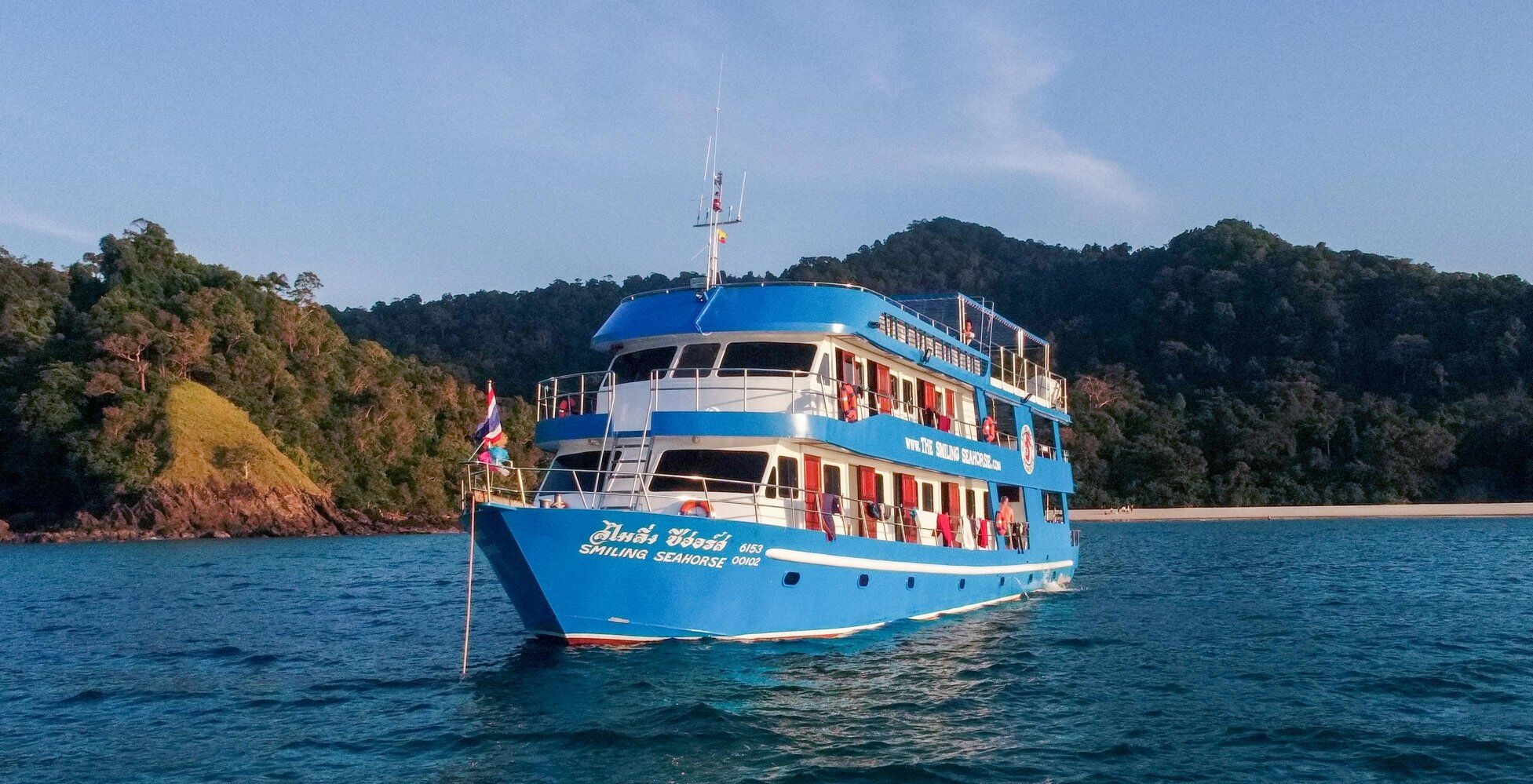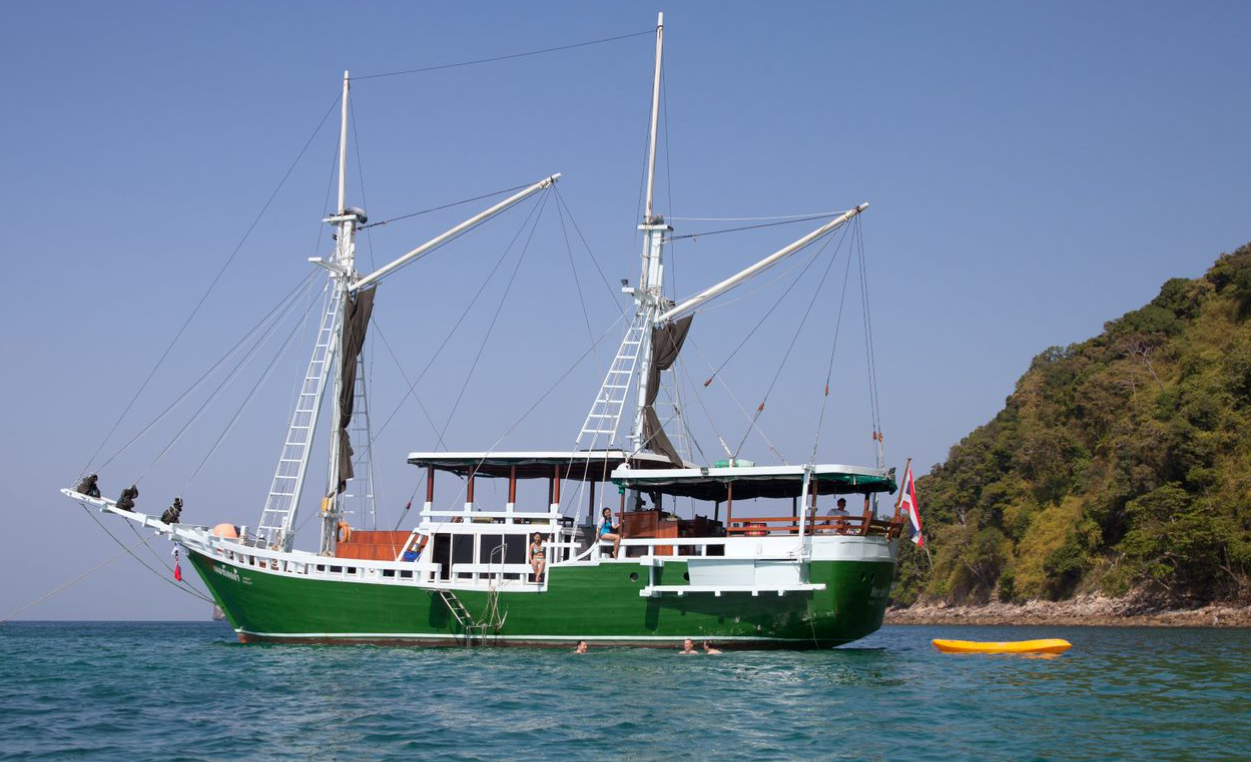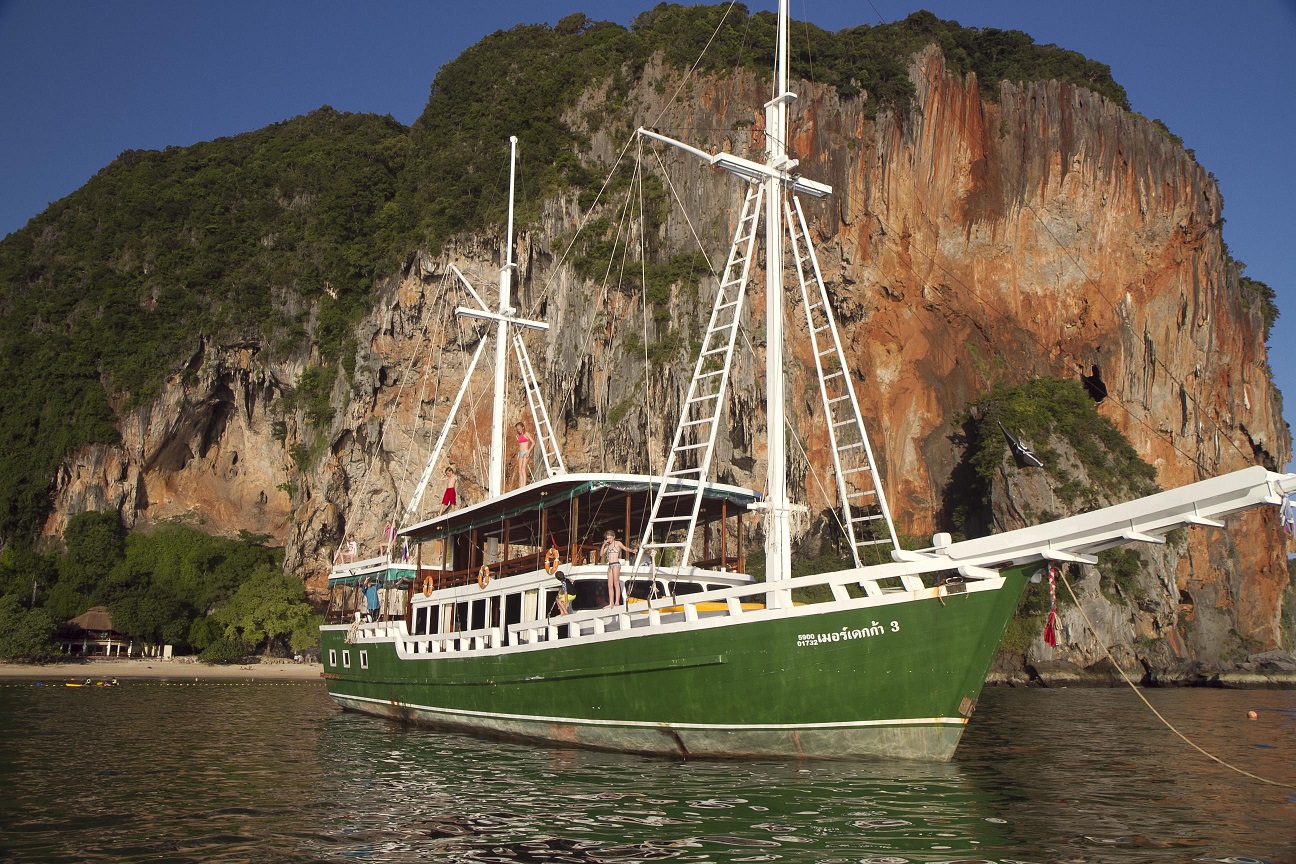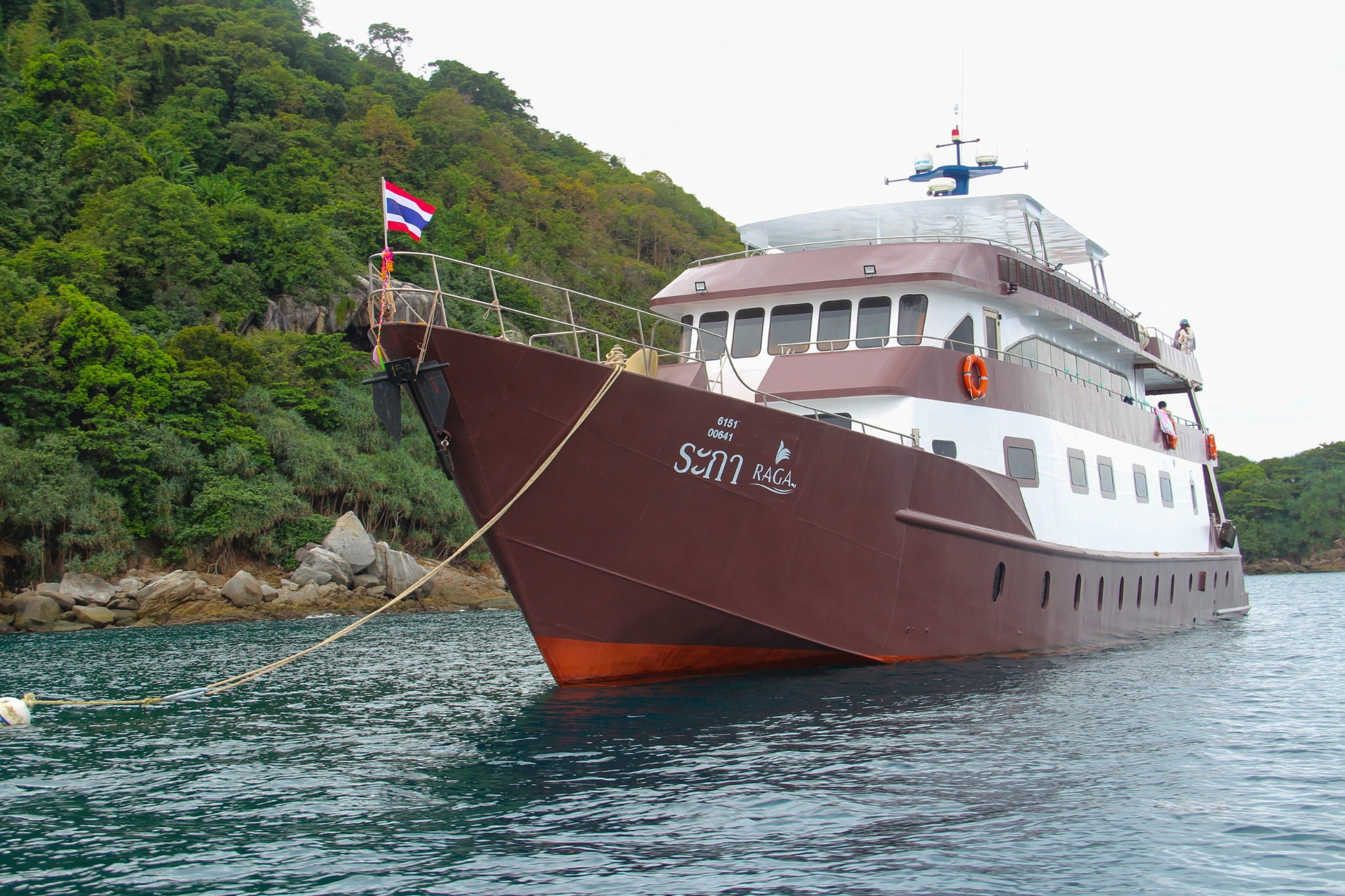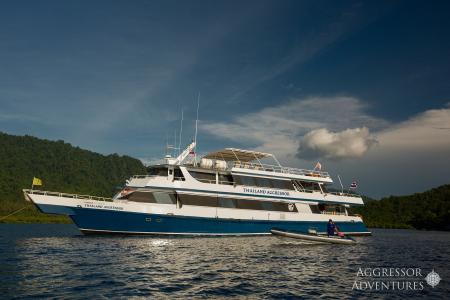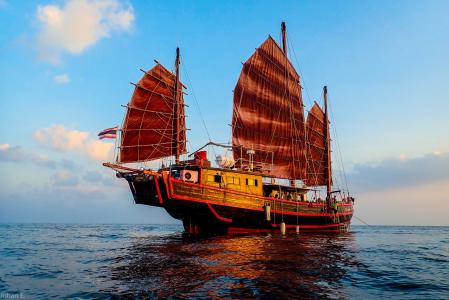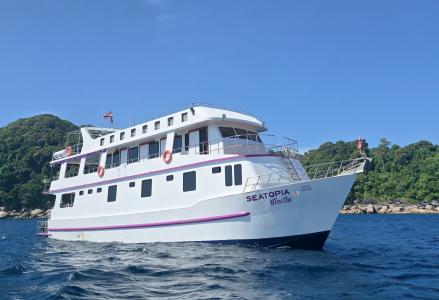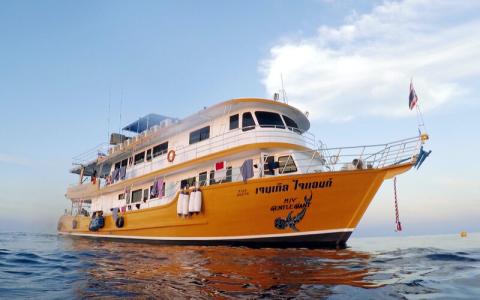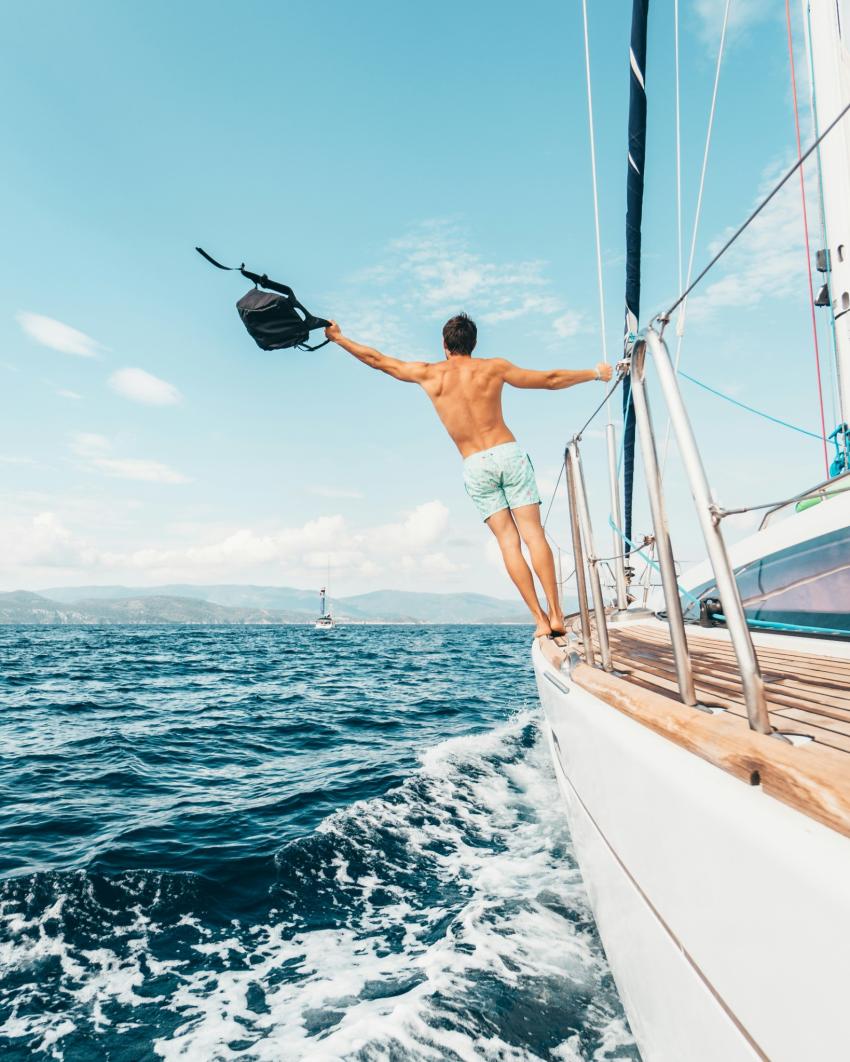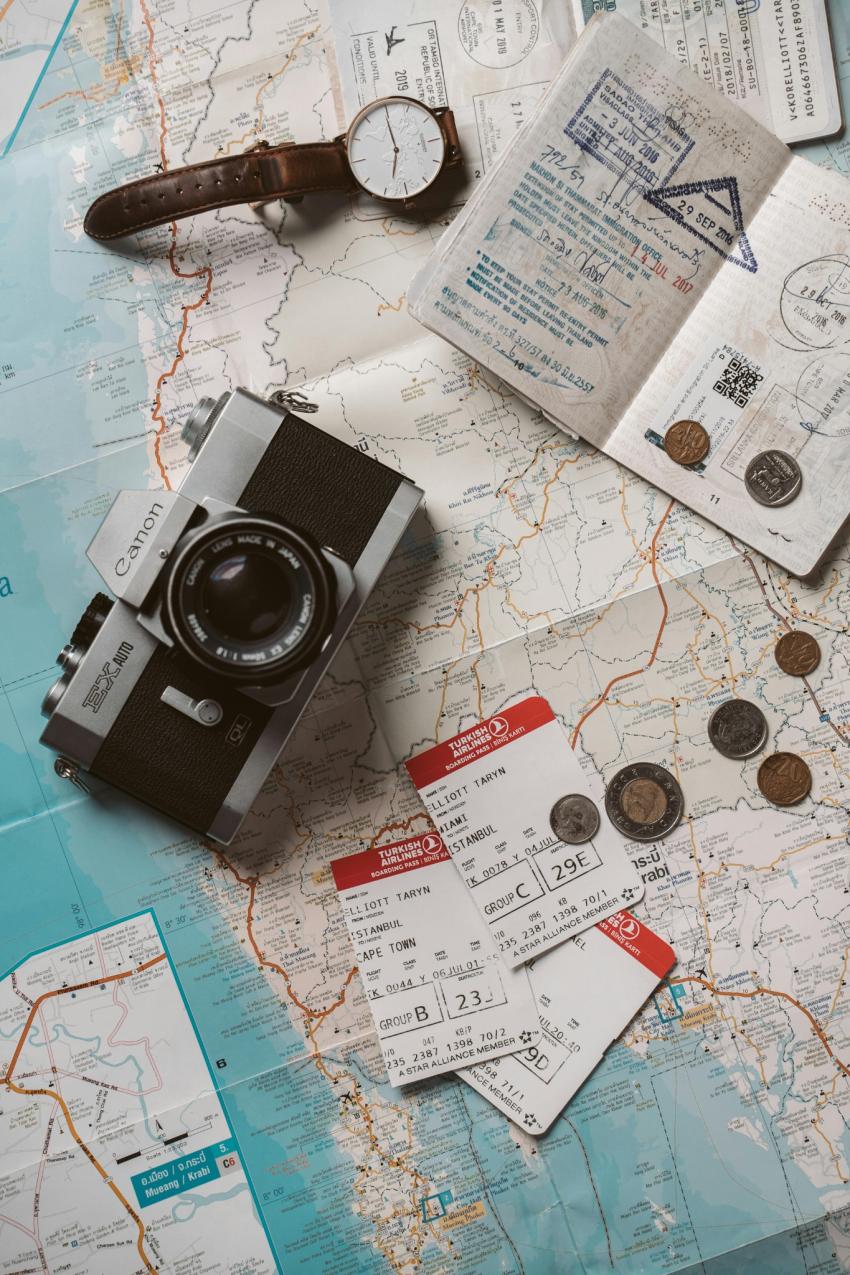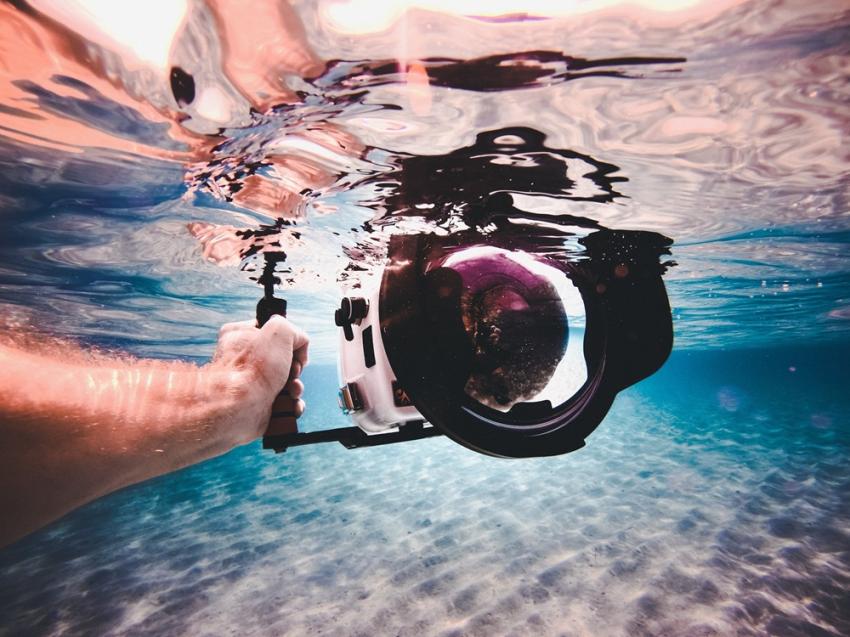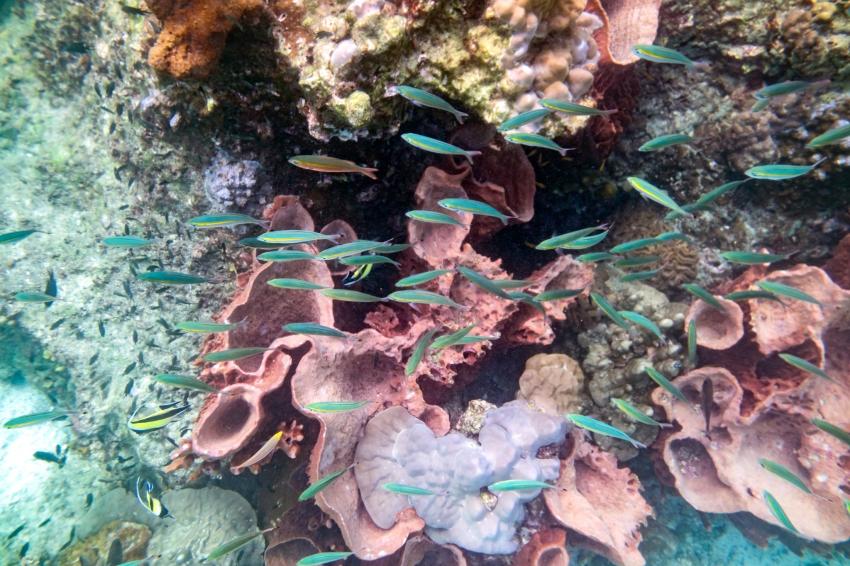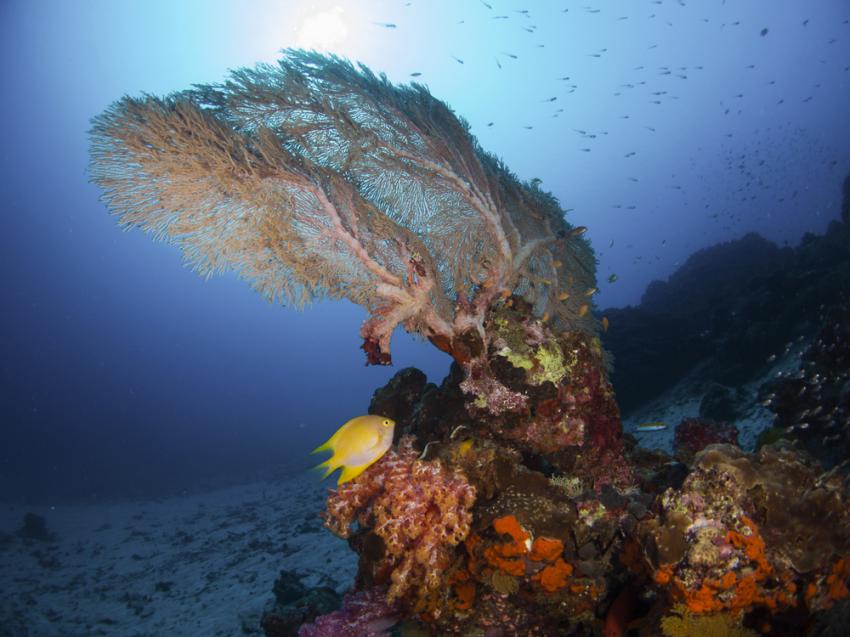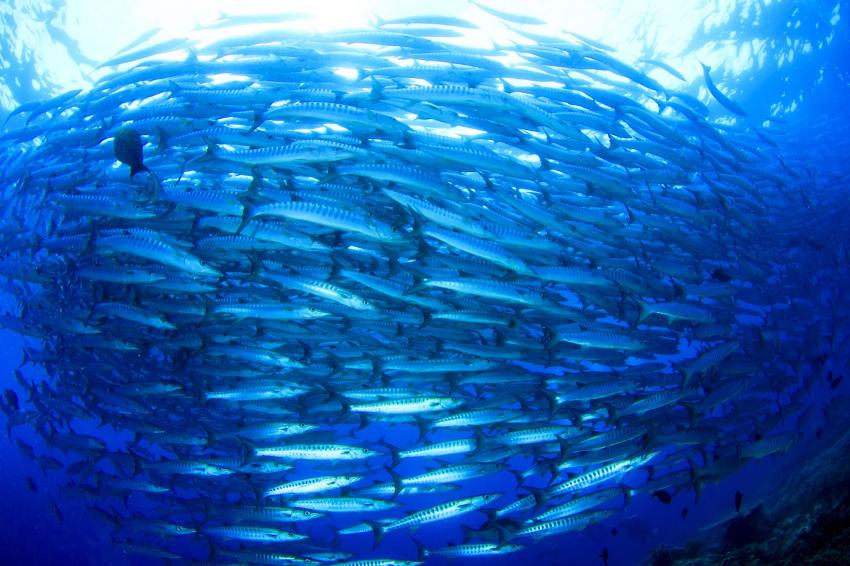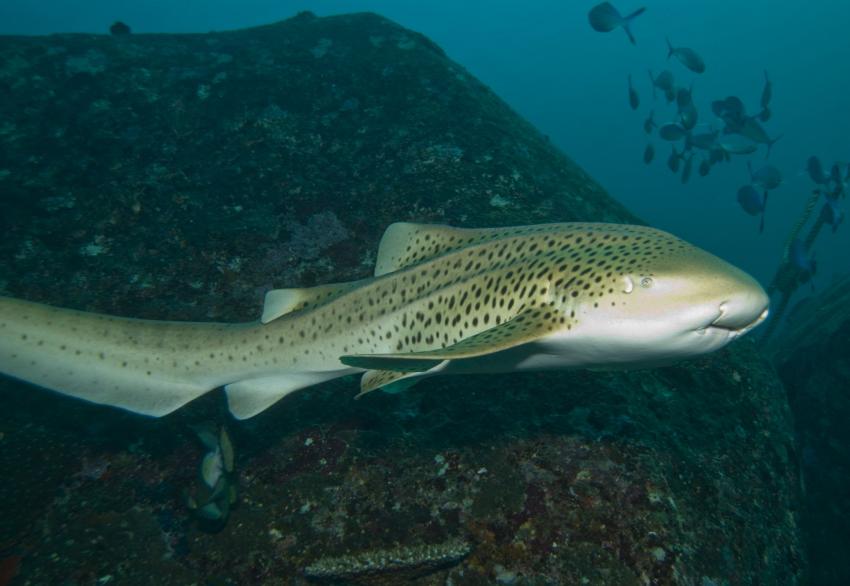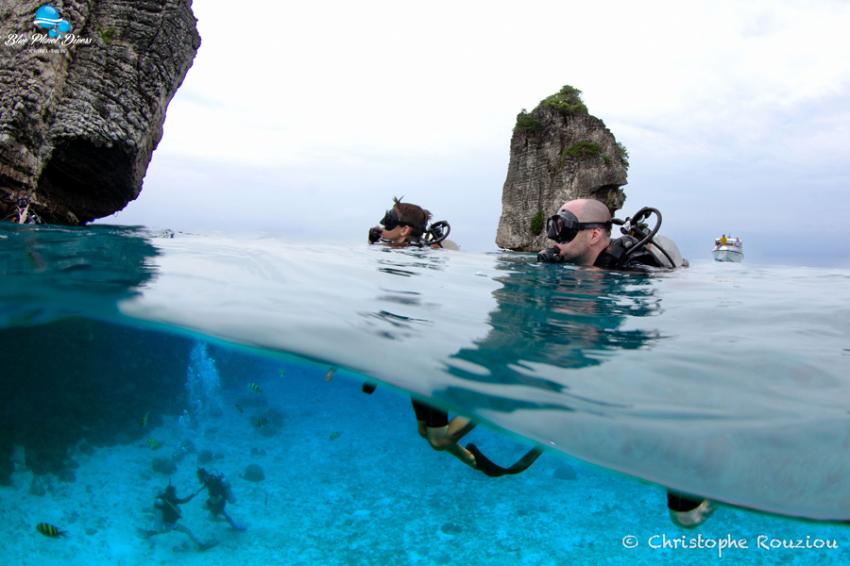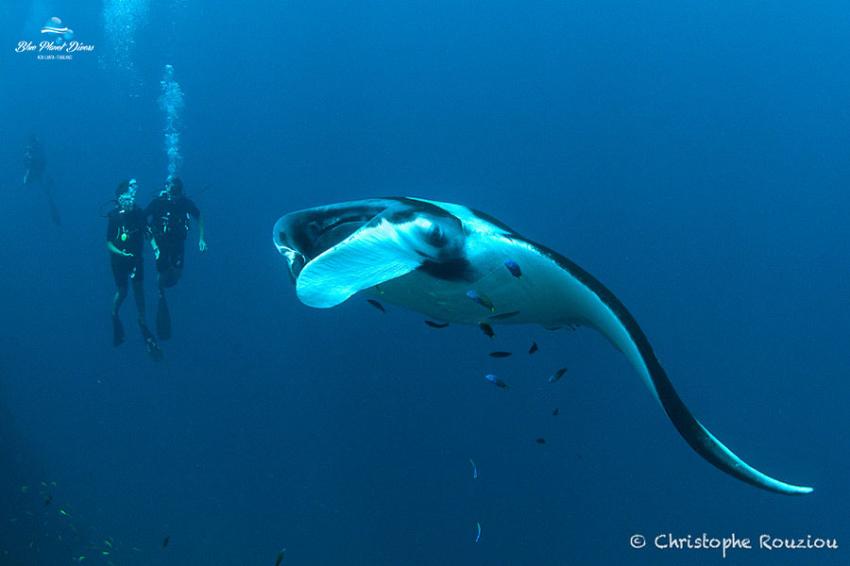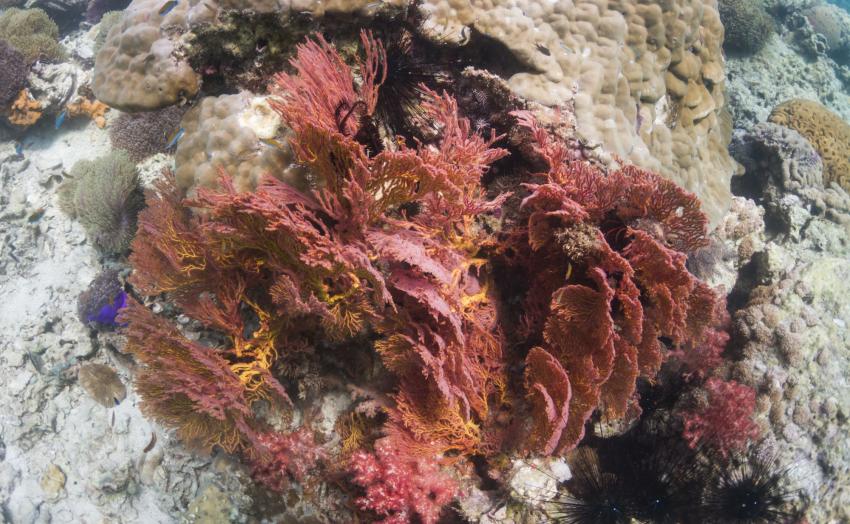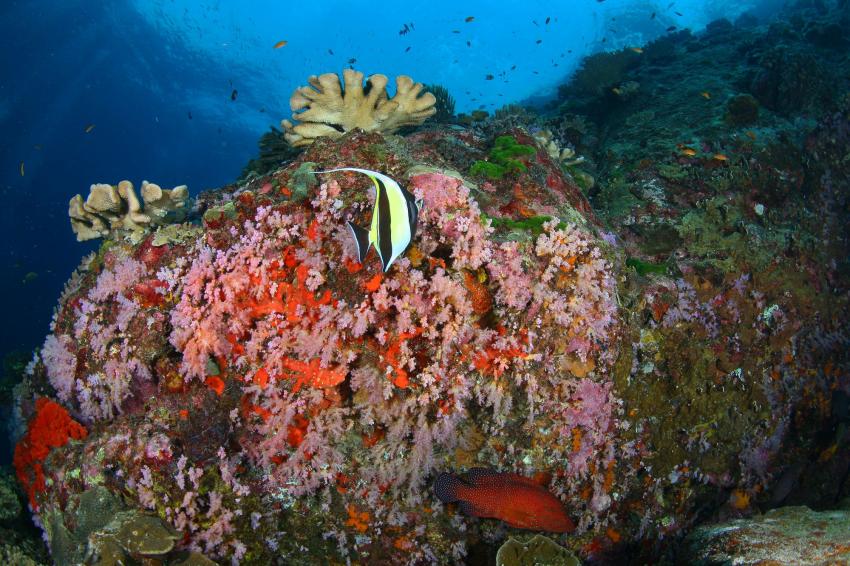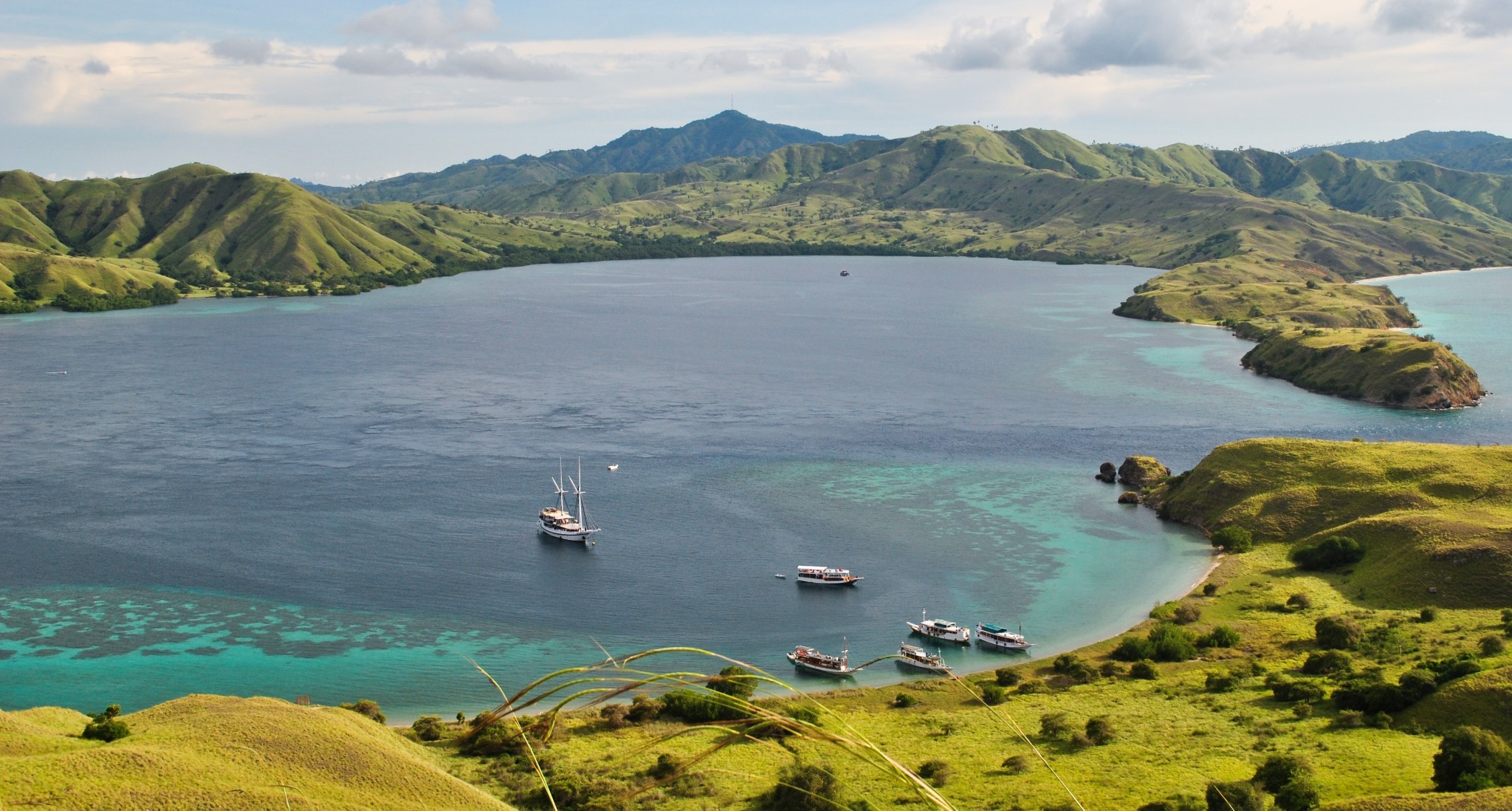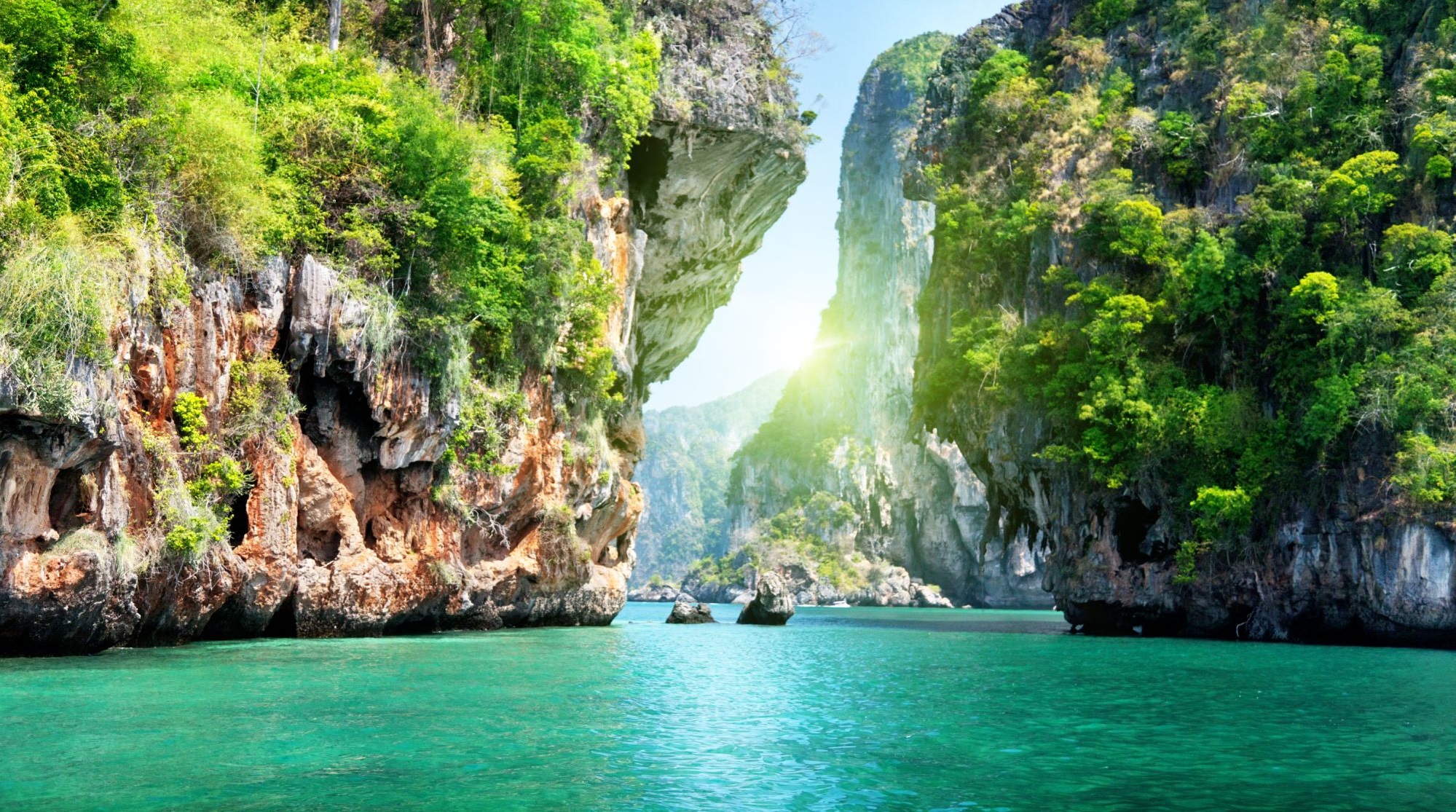
Thailand Liveaboard Diving
60% of divers returns to us
Best Thailand Liveaboards
Handpicked Thailand Selections
Liveaboard Diving in Thailand
Thailand's diving scene is a vibrant tapestry of marine biodiversity and stunning underwater landscapes. The Andaman Sea and the Gulf of Thailand offer distinct diving experiences, each teeming with life and unique underwater features. Divers in Thailand are treated to sightings of majestic whale sharks, graceful manta rays, and a plethora of colorful tropical fish. The country's waters are also home to fascinating macro species, perfect for underwater photographers seeking to capture smaller, elusive creatures.
Coral reefs in Thailand are a major draw, showcasing a variety of hard and soft corals. Dive sites range from gently sloping coral gardens to dramatic deep drop-offs and wrecks, catering to every skill level. Thailand's dive sites are not only about the vibrant marine life but also about the intriguing underwater topography, including caves and swim-throughs that offer an exciting element of exploration.
Thailand liveaboard cruises allow access to more remote and pristine dive sites. Liveaboards offers comprehensive dive safaris in Thailand, from the renowned Richelieu Rock to the untouched Surin Islands, ensuring a memorable underwater experience for every diver. Whether you're looking for a luxury diving liveaboard in Thailand or more affordable Thai dive trips, the options cater to a wide range of preferences, ensuring a unique and comprehensive exploration of Thailand's underwater marvels
Must See Thailand Dive Sites
Thailand's diving landscape is a treasure trove of spectacular sites, each offering unique underwater experiences. The country's diverse array of dive locations draws enthusiasts from around the globe, eager to explore its underwater wonders.
Starting with the iconic Koh Phi Phi, divers are treated to an aquatic playground of vibrant coral gardens and teeming marine life. This site is a paradise for underwater photography, with its crystal-clear waters and diverse marine species. Nearby, Koh Lipe, nestled in the Tarutao National Marine Park, offers equally stunning visibility and is a sanctuary for soft corals and colorful fish.
The Surin Islands diving provides a more secluded diving experience, ideal for those seeking tranquility beneath the waves. Here, the vibrant coral reefs and diverse marine life, including large pelagics, make every dive an adventure. Moving to the renowned Similan Islands, divers are greeted with spectacular underwater scenery, characterized by huge boulder formations and an abundance of marine life.
Richelieu Rock, a jewel in Thailand's diving crown, is celebrated for its purple corals and the chance to encounter whale sharks, making it a bucket-list site for many. Koh Tachai, part of the Similan Islands National Park, offers challenging currents and is a haven for manta rays and leopard sharks, appealing to more experienced divers.
For those seeking a variety of underwater landscapes, Koh Haa diving provides a mix of caverns, swim-throughs, and vibrant coral reefs. The remote Hin Daeng and Hin Muang are famous for their steep drop-offs and walls, offering some of the best opportunities to see large pelagics like manta rays and whale sharks in Thailand.
Thailand's liveaboard diving trip ensures a comprehensive exploration of the country's underwater marvels. From the serene waters of Koh Lipe to the exhilarating depths of Hin Daeng and Hin Muang, each site contributes to Thailand's reputation as a premier diving destination. With options ranging from luxury liveaboards to eco-friendly trips, divers can find the perfect way to experience the best of Thailand's underwater world
When To Go Diving in Thailand
The best time to dive in Thailand generally falls between November and April, when the monsoon season has subsided, offering calmer seas and clearer visibility. Water temperatures during this period hover around 27°C to 30°C (81°F to 86°F), providing comfortable conditions for extended dives. Visibility can reach up to 30 meters in prime conditions, particularly in the Andaman Sea.
The Similan Islands, renowned for their crystal-clear waters, are best visited from February to April for the highest chance of whale shark and manta ray encounters. The Gulf of Thailand, with dive sites like Koh Tao, also peaks during these months, though it offers year-round diving with varying visibility. Currents in Thailand's waters are generally moderate but can vary depending on the dive site and season, making it suitable for both beginners and advanced divers
Frequently Asked Questions About Thailand
Is Thailand good for scuba diving?
Yes, Thailand is an excellent destination for scuba diving. It offers a diverse range of diving experiences suitable for both beginners and experienced divers. Here are some reasons why Thailand is highly regarded in the diving community:
Diverse Marine Life: Thailand's waters are home to a rich variety of marine species, including colorful tropical fish, rays, sharks, and turtles. The diversity of underwater life provides an exciting experience for divers of all levels.
Beautiful Coral Reefs: The country boasts some of the most beautiful coral reefs in the world, with a mix of hard and soft corals. The vibrant underwater landscapes are a major attraction for divers.
Variety of Dive Sites: Thailand offers a wide range of dive sites, from shallow coral gardens perfect for beginners to deep wrecks and challenging drift dives for advanced divers.
Clear Waters and Good Visibility: Many dive sites in Thailand, especially those around the Similan and Surin Islands, are known for their clear waters and excellent visibility, enhancing the overall diving experience.
Accessible Diving: Thailand is well-equipped with diving infrastructure, including numerous dive shops, schools, and liveaboard operators. This makes it easy for divers to plan and execute their diving trips.
Year-Round Diving: While the best conditions are generally from November to April, Thailand offers year-round diving opportunities, with different regions having their own peak seasons.
Value for Money: Compared to other popular diving destinations, Thailand offers good value for money, with affordable dive packages.
In summary, Thailand's combination of diverse marine life, stunning coral reefs, a variety of dive sites, and excellent diving conditions makes it a top destination for scuba divers from around the world
What do you wear to scuba diving in Thailand?
Preparing for a scuba diving adventure in Thailand, especially when you're planning to embark on a liveaboard scuba diving trip, requires careful consideration of the gear and clothing you'll need. Here's a rundown of the typical equipment and attire for a successful dive in Thailand's waters, keeping in mind the unique conditions you'll encounter on a liveaboard dive safari.
Wetsuit: With water temperatures typically ranging from 27°C to 30°C (81°F to 86°F), a 3mm wetsuit is often adequate for most divers. This thickness provides a good balance of warmth and flexibility, crucial for the varied diving activities you'll experience on a liveaboard scuba diving adventure. In warmer months, some divers may opt for a shorty wetsuit or a dive skin.
Mask, Fins, and Snorkel: Essential for any dive, a comfortable mask is key. Full-foot fins suited for tropical waters like Thailand's are commonly used. A snorkel is particularly handy for those moments on the liveaboard when you want to explore the surface.
Dive Computer: Crucial for monitoring depth and time, a dive computer is indispensable, especially when diving in the diverse locations accessed by a liveaboard.
BCD and Regulators: Standard equipment for any dive, you can bring your own or rent from one of the many dive shops in Thailand, often associated with liveaboard diving operators.
Exposure Protection: A rash guard or dive skin is advised for additional protection against the elements, beneficial when spending extended periods in the water during liveaboard trips.
Gloves and Booties: Not always essential, but some divers prefer them for extra protection, particularly when diving around wrecks or rougher terrains, which are often part of liveaboard diving itineraries.
Sun Protection: Essential for surface intervals on the liveaboard. High SPF sunscreen, a hat, and sunglasses will protect you from the strong tropical sun.
Hydration and Conservation: Staying hydrated is crucial, especially given the typically longer and more frequent dives on a liveaboard. Using reef-safe sunscreen is recommended to minimize environmental impact.
Liveaboards in Thailand, typically offer a range of rental equipment. This makes it easy for divers traveling to Thailand to find everything they need, whether they're embarking on a luxurious liveaboard journey or a more budget-friendly dive safari
Are there opportunities for both beginner and advanced divers in Thailand?
Yes, Thailand offers excellent diving opportunities for both beginner and advanced divers, making it a versatile and appealing destination for people at all levels of diving experience.
For Beginner Divers:
Shallow and Calm Sites: Many dive sites in Thailand have shallow, calm waters with minimal currents, ideal for beginners.
Snorkeling Opportunities: In addition to diving, there are plenty of snorkeling spots where beginners can comfortably explore marine life from the surface.
Guided Dives: Beginner divers can benefit from guided dives, where experienced instructors help them navigate the underwater environment safely.
For Advanced Divers:
Challenging Dive Sites: More experienced divers can explore deeper dive sites, with strong currents and advanced topography, like those found in the Similan Islands or Richelieu Rock.
Wreck Diving: There are several fascinating wreck sites in Thailand, offering advanced divers the chance to explore historical underwater ruins.
Liveaboard Trips: For a more immersive experience, advanced divers can embark on liveaboard trips, which often visit remote sites that are less frequented and offer more challenging dives.
Wide Range of Marine Life: Advanced divers looking for specific encounters, such as with whale sharks or manta rays, will find certain sites around Thailand particularly rewarding.
Overall, Thailand's diverse underwater landscapes, ranging from easy, coral-filled shallow bays to deep, current-swept pinnacles, provide suitable conditions for divers of all skill levels. With its rich marine biodiversity, warm waters, and excellent visibility, Thailand remains a top destination for both learning to dive and for undertaking more adventurous, advanced dives
